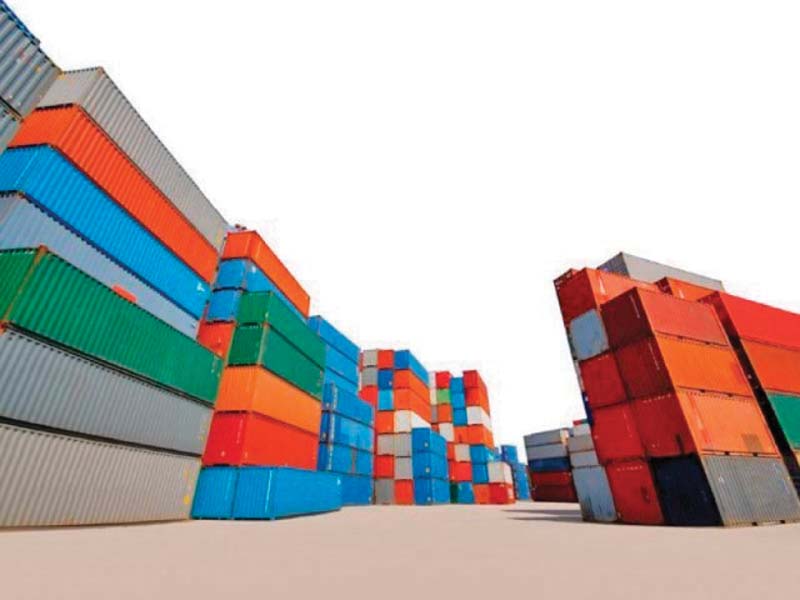
For the first three months (July-September) of the current financial year, Pakistan’s exports have shrunk by 14% to $5.16 billion compared to $6 billion in the corresponding period of 2014.
The decline is getting worse each month as during September it accelerated to 20% over the same month of 2014. While the recent trend in contraction of exports is a matter of great concern, Pakistan has been losing on average 1.45% yearly in export market shares for the last 10 years.
Japan to step up textile imports from Pakistan
Why is Pakistan performing so poorly whereas other developing countries including all our neighbours are moving forward and increasing their share in trade? Is it just the energy crisis and political stability issues, which are the main factors?

There is no denying the fact that energy as well as political stability are much better than they were two years ago. The need is to explore what issues are holding up the progress while others are galloping ahead.
A cursory look at newspaper headlines makes it clear that countries around the world are integrating and becoming part of the global supply chain through any combination of market access routes. The most common ones are unilateral, bilateral, regional, inter-regional, plurilateral and multilateral.
Unilateral liberalisation has been the most popular route for making exports competitive. Experience of almost all developing countries such as Korea, China, Turkey and Vietnam reflects this fact.
It has also been true in case of Pakistan, whenever its exports increased, although its reform process was slow and short-lived and only lasted for about a decade from 1991 to 2002.
Standing isolated
Almost all international trade and economic experts have been warning Pakistan that lack of reforms is leaving it isolated from international markets.
In March 2015, when Pakistan presented its trade policy for a six yearly peer review at the World Trade Organization (as per rules), members of the body raised concerns over continued use of outdated import substitution policies and high degree of overall tariff protection. They also criticised the recent abolition of duty-free tariff lines.
Moody’s report: International bonds weaken Pakistan’s debt affordability
Instead of heeding their advice, Pakistan further increased its tariffs in the 2014-15 budget and several times since then. Last week’s levy of duty on yarn and fabric is just one other example.
Bilateral agreements have been almost the only route used by Pakistan for gaining market access over the last 10 years. Unfortunately, it has not worked well as it did for several other countries such as Turkey vis-à-vis the EU.
Unlike Pakistan, Turkey took its time and undertook deep reforms before entering a customs union with the EU.
Low priority
Regional and inter-regional market access mechanism has been of rather low priority for Pakistan. It acceded to the South Asia Free Trade Agreement (Safta) in 2006 and the ECO Trade Agreement (ECOTA) in 2003.
While Safta resulted in a major increase in trade volumes for some South Asian countries, such as India, Bangladesh and Sri Lanka, it has served very little purpose in terms of increasing Pakistan’s trade with Safta nations.
It could partially be due to the fact that Pakistan is the only country not allowing MFN treatment to another Safta member and also does not allow trade through the more convenient land routes. In case of ECOTA, there has been no new market access whatsoever.
As far as intra-regional trade agreements are concerned, neither Safta nor ECOTA are part of any such deals. Therefore, this route has been closed for Pakistan although many of its competing countries have made good progress on gaining market access in key markets such as the US through the recently concluded Trans-Pacific Partnership Agreement.
Plurilateral route
Another way through which many WTO members liberalised their trade is the plurilateral route. The only successful plurilateral tariff liberalisation agreement is the WTO Information Technology Agreement signed in 1997.
It now covers over 97% of world trade and almost all competing Asian developing countries are its signatories. Pakistan has been deliberating on signing it for the last 15 years but has not yet taken any decision.
It is clear that most market access routes for Pakistan are closed. The ones through which it could have made progress, ie, unilateral, regional or plurilateral, Pakistan has closed these doors on itself.
Structural change: Why devaluating rupee will not correct anything
It is no wonder that Pakistan is one of the worst performers in terms of exports and has been continuously losing its trade share over the last several decades. It has to realise that borrowing or foreign aid are no substitute for trade if it wants to become a self-reliant and prosperous country.
The writer served as Pakistan’s ambassador to WTO from 2002 to 2008
Published in The Express Tribune, November 9th, 2015.
Like Business on Facebook, follow @TribuneBiz on Twitter to stay informed and join in the conversation.
























1714129906-0/Clint-Eastwood-(1)1714129906-0-270x192.webp)
















1714024018-0/ModiLara-(1)1714024018-0-270x192.webp)









COMMENTS (31)
Comments are moderated and generally will be posted if they are on-topic and not abusive.
For more information, please see our Comments FAQ